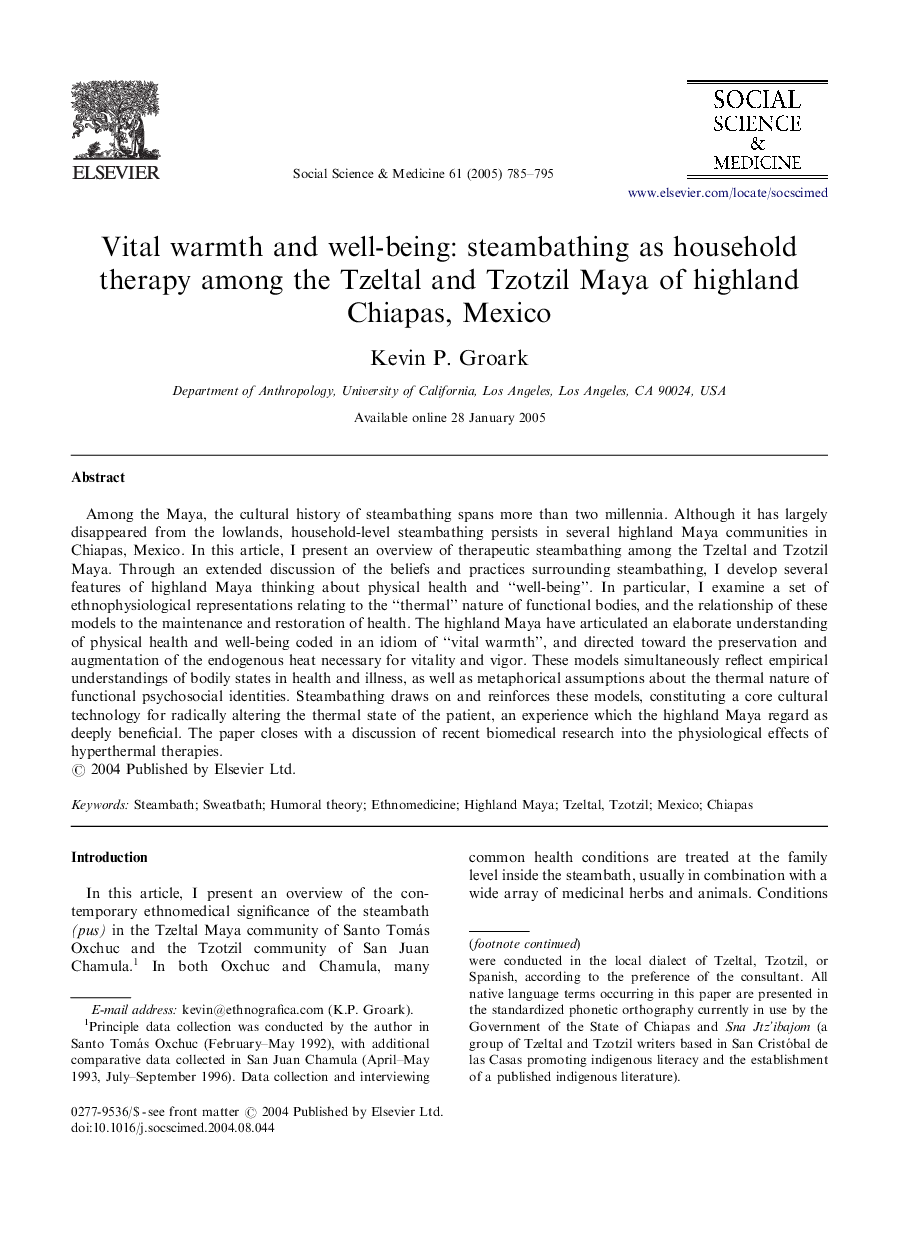| Article ID | Journal | Published Year | Pages | File Type |
|---|---|---|---|---|
| 10472417 | Social Science & Medicine | 2005 | 11 Pages |
Abstract
Among the Maya, the cultural history of steambathing spans more than two millennia. Although it has largely disappeared from the lowlands, household-level steambathing persists in several highland Maya communities in Chiapas, Mexico. In this article, I present an overview of therapeutic steambathing among the Tzeltal and Tzotzil Maya. Through an extended discussion of the beliefs and practices surrounding steambathing, I develop several features of highland Maya thinking about physical health and “well-being”. In particular, I examine a set of ethnophysiological representations relating to the “thermal” nature of functional bodies, and the relationship of these models to the maintenance and restoration of health. The highland Maya have articulated an elaborate understanding of physical health and well-being coded in an idiom of “vital warmth”, and directed toward the preservation and augmentation of the endogenous heat necessary for vitality and vigor. These models simultaneously reflect empirical understandings of bodily states in health and illness, as well as metaphorical assumptions about the thermal nature of functional psychosocial identities. Steambathing draws on and reinforces these models, constituting a core cultural technology for radically altering the thermal state of the patient, an experience which the highland Maya regard as deeply beneficial. The paper closes with a discussion of recent biomedical research into the physiological effects of hyperthermal therapies.
Keywords
Related Topics
Health Sciences
Medicine and Dentistry
Public Health and Health Policy
Authors
Kevin P. Groark,
